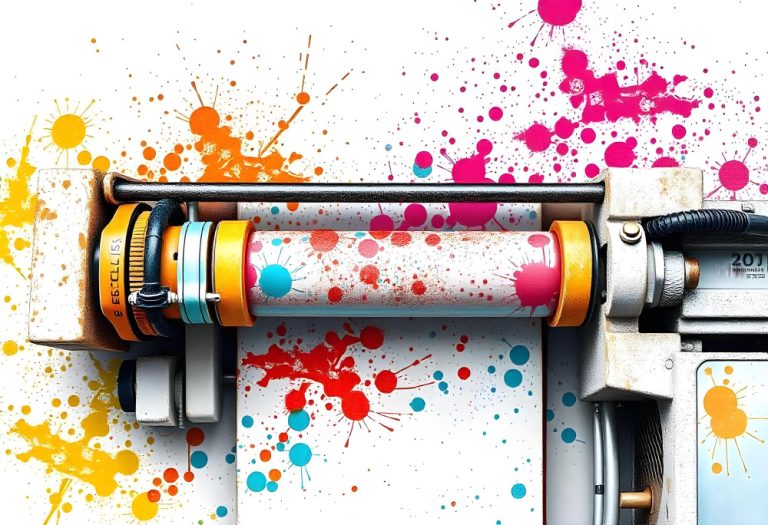In the realm of modern printing, DTF printing stands out as a revolutionary technique that is reshaping the industry. Unlike traditional printing methods, such as screen printing or direct-to-garment printing, DTF (Direct to Film) technology offers unparalleled versatility and quality. This innovative process allows for high-resolution designs to be transferred effortlessly onto various types of fabrics, catering to the increasing demand for custom printing services. As businesses and consumers seek more efficient solutions, understanding the nuances of DTF vs traditional techniques becomes essential. Not only does DTF printing provide vibrant colors and durability, but it also optimizes production times, making it a viable choice for both large orders and smaller custom requests.
Direct to Film printing, often referred to as DTF, is quickly gaining prominence in the printing landscape, offering a modern alternative to conventional methods. This innovative approach utilizes specially coated films to deliver high-quality prints that can easily adhere to different materials, setting it apart from older processes like screen and direct-to-garment printing. As the market leans towards customizable printing solutions, understanding the advantages and applications of DTF technology becomes crucial. With its capability to produce vivid, intricate designs efficiently, DTF not only meets the demands of contemporary consumers but also positions itself favorably in the discussion of printing options. Overall, DTF is ushering in a new era of custom printing services, making it an appealing choice for a diverse array of projects.
The Rise of DTF Printing in Modern Customization
Direct to Film (DTF) printing represents a significant advancement in the world of custom printing services, offering capabilities that resonate deeply with today’s consumer demand for personalized products. As people cultivate their unique identities through fashion and home decor, businesses have recognized the immense potential of DTF technology to fulfill these desires. The ability to print intricate designs in vibrant colors with high detail on various fabrics makes DTF a standout choice that often surpasses traditional printing techniques.
Furthermore, the flexibility of DTF printing allows for rapid turnarounds on custom orders, a vital factor in today’s fast-paced market. Unlike traditional printing methods that often struggle with setup times and limited designs, DTF shines by presenting a seamless solution for small runs and intricate designs. By quickly adapting to consumer demands, businesses leveraging DTF technology are not only meeting market needs but also driving innovation in the printing industry.
Quality Comparison: DTF vs Traditional Methods
When it comes to print quality, DTF printing elevates the standard set by traditional methods like screen printing. Traditional printing often grapples with color limitations and challenges when reproducing detailed images. In contrast, DTF printing utilizes advanced inkjet technology that applies a full spectrum of colors seamlessly onto the substrate. This means businesses can confidently offer high-resolution, photorealistic prints that delight customers and stand out in the market.
Moreover, DTF prints demonstrate exceptional durability and resistance to fading, even after multiple washes. This contrasts starkly with some traditional methods where the vibrancy can diminish over time. For businesses prioritizing quality and customer satisfaction, DTF printing presents a compelling case as it not only meets the aesthetic demands of consumers but also ensures longevity in their products.
Cost-Effectiveness of DTF Printing
One of the most attractive aspects of DTF printing lies in its cost-effectiveness, especially for smaller runs and custom orders. Traditional printing techniques like screen printing often involve expensive setup costs and labor-intensive processes that can escalate for small quantities. DTF, on the other hand, requires minimal setup, making it financially feasible for businesses that need to accommodate a variety of client requests without the burden of excessive startup costs.
As a result, DTF printing opens the door for small businesses and entrepreneurs to enter the customized product market without falling into the financial traps often associated with traditional methods. This affordability combined with the ability to produce high-quality results fosters an inclusive environment for creativity and innovation, allowing even smaller players to compete effectively in a crowded marketplace.
Versatility of DTF Printing Across Materials
Versatility is a hallmark feature of DTF printing, setting it apart from traditional methods that are often bound by material limitations. While techniques like screen printing are typically best suited for cotton fabrics, DTF printing provides the freedom to work with a broader range of substrates, including polyester blends and more rigid materials. This adaptability not only benefits a variety of industries but also opens new doors for creative expression.
Businesses can expand their product offerings using DTF technology, producing everything from apparel to unique promotional items. This versatility allows for the delivery of customized solutions that meet diverse customer needs, making DTF printing an increasingly appealing option. As demand for innovative products continues to rise, incorporating DTF technology can help businesses stay ahead in the ever-changing landscape of custom printing.
Emerging Market Trends Favoring DTF Printing
Recent market trends reveal a strong inclination towards DTF printing technologies due to their capacity for meeting modern consumer desires. The rising demand for customized and personalized products reflects a shift in consumer consciousness, where individuals seek to connect with their purchases on a deeper level. DTF printing’s ability to produce high-quality, vibrant prints facilitates this desire for personalization, making it a preferred choice among makers and brands alike.
In addition to customization, the increasing adoption of DTF printing by small businesses highlights its growing market appeal. With technological advancements leading to more affordable and user-friendly printing solutions, small and medium enterprises can now leverage DTF printing without significant financial investment. This democratization of technology encourages innovation, leading to a dynamic market landscape where new ideas and customized products can flourish.
The Future of DTF Printing vs Traditional Methods
As we look to the future, DTF printing is set to maintain a significant edge over traditional printing methods, reshaping the industry landscape. Its combination of quality, cost-effectiveness, and versatility positions it perfectly to adapt to the evolving needs of consumers and businesses. As more printers adopt this technology, we can expect continuous improvements that will further enhance print quality and efficiency, making DTF printing the go-to method for custom designs.
Moreover, as sustainable practices become a priority in the printing industry, DTF technology offers environmentally friendly options that can attract conscious consumers. By minimizing waste during the production process and providing high-quality results, DTF printing not only meets consumer expectations but also aligns with broader sustainability goals. This shift towards greater environmental responsibility will be crucial as the market evolves, making DTF printing a forward-thinking choice for the printing needs of tomorrow.
Frequently Asked Questions
What is DTF printing and how does it differ from traditional printing methods?
DTF printing, or Direct to Film printing, is a contemporary printing method that involves creating high-quality designs on a special film, which are then transferred onto fabrics. Unlike traditional printing methods such as screen printing, DTF can handle a wider variety of colors and materials, delivering vibrant and durable prints.
How does DTF printing compare to screen printing in terms of quality and cost?
DTF printing typically provides superior quality compared to screen printing, as it allows for a full spectrum of colors and intricate designs without the limitations of screen setups. Additionally, DTF is often more cost-effective for small runs, since it avoids high initial setup costs associated with traditional screen printing.
Is DTF printing suitable for all fabric types?
Yes, one of the advantages of DTF printing is its versatility. It can effectively print on various fabric types including cotton, polyester, and blends. This makes DTF a great choice for custom printing services across different apparel and textile applications.
What recent developments have enhanced DTF printing technology?
Recent advancements include significant investments in larger DTF printers by companies like Eazydtf, which enhance production capacity and quality. Also, accessible, compact DTF printers from brands like AM.CO.ZA allow smaller enterprises to leverage DTF technology without heavy upfront costs.
Why is DTF printing becoming the preferred choice for custom merchandise?
DTF printing is rising in popularity for custom merchandise due to its quick turnaround times, low setup costs, and high quality. As consumers increasingly seek personalized products, DTF’s capability for on-demand printing aligns perfectly with market demands.
What should businesses consider when choosing between DTF and traditional printing methods?
Businesses should evaluate their specific needs regarding print quality, cost, and fabric versatility. DTF printing offers higher quality, cost-efficiency for smaller runs, and the ability to print on a variety of materials, making it an attractive alternative to traditional methods like screen printing.
| Aspect | DTF Printing | Traditional Methods |
|---|---|---|
| Quality | High-quality, photorealistic images | Limited colors, complex setups can hinder quality |
| Cost-Efficiency | Minimal setup costs; quick turnaround | High initial setup costs; longer processing times |
| Versatility | Prints on various substrates; adaptable for different applications | Limited by fabric types; less adaptable for complex designs |
Summary
DTF printing has emerged as a revolutionary technique in the world of printing, offering a modern solution with advantages that traditional methods struggle to match. As businesses and consumers increasingly seek high-quality, customizable, and cost-effective printing options, DTF technology stands out as a favored choice. Its ability to produce vibrant prints on a wide range of textiles while ensuring affordability and efficiency makes it not only a practical solution but a game-changer in the market. Going forward, those involved in printing, from small businesses to large enterprises, should consider leveraging the benefits of DTF printing to meet the evolving demands of consumers.







